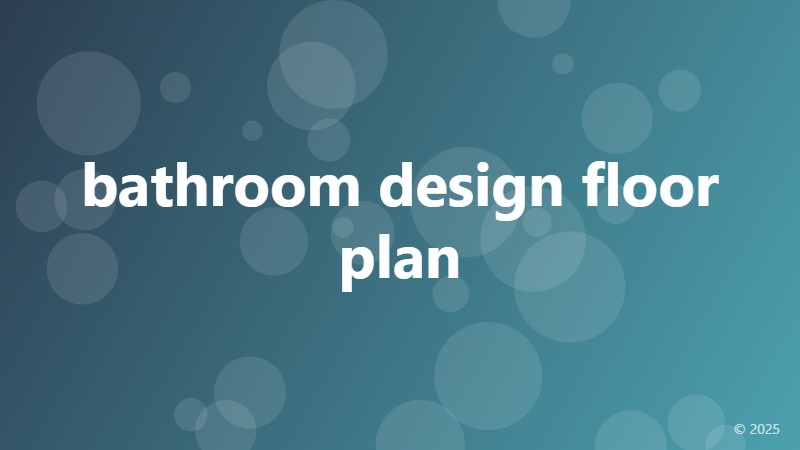bathroom design floor plan

Creating a Functional Bathroom Design Floor Plan
When it comes to designing a bathroom, one of the most crucial aspects to consider is the floor plan. A well-planned bathroom floor plan can make all the difference in creating a functional and comfortable space. In this article, we'll explore the key elements to consider when designing a bathroom floor plan, and provide tips on how to create a layout that meets your needs.
Assessing Your Bathroom Space
Before you start designing your bathroom floor plan, it's essential to assess the space you're working with. Take note of the room's dimensions, including the location of any windows, doors, and plumbing fixtures. Consider the style and theme you want to achieve, as well as the number of users the bathroom will need to accommodate.
Measure the room carefully, taking into account any obstacles such as pipes, electrical outlets, and any existing fixtures. This will help you determine the optimal layout for your bathroom design.
Key Elements of a Bathroom Floor Plan
A functional bathroom floor plan should include the following key elements:
1. The "Wet Zone": This refers to the area around the shower, bathtub, and sink, where water is most likely to be splashed. A well-designed wet zone should include a waterproof floor, walls, and any surrounding surfaces.
2. The "Dry Zone": This area includes the toilet, storage cabinets, and any other areas that don't come into contact with water. A dry zone should be well-ventilated and include ample storage for toiletries and other bathroom essentials.
3. Traffic Flow: Consider the flow of traffic in and out of the bathroom, as well as the path users will take to reach the sink, toilet, and shower. A clear and unobstructed path will make the bathroom feel more spacious and functional.
Designing for Functionality and Comfort
A functional bathroom design floor plan should prioritize both functionality and comfort. Here are some tips to keep in mind:
1. Provide Ample Storage: Incorporate storage cabinets, shelves, and countertops to keep toiletries and other bathroom essentials within easy reach.
2. Incorporate a Comfortable Vanity: Choose a vanity that provides ample counter space, storage, and comfortable seating for users.
3. Consider a Linear Layout: A linear layout can create a sense of openness and make the bathroom feel more spacious. This layout is particularly effective in smaller bathrooms.
Creating a Bathroom Floor Plan That Works for You
By considering the key elements of a bathroom floor plan, assessing your bathroom space, and prioritizing functionality and comfort, you can create a bathroom design that meets your needs and exceeds your expectations. Remember to keep the design flexible, and don't be afraid to experiment with different layouts until you find one that works for you.
With these tips and a little creativity, you can create a bathroom floor plan that is both functional and beautiful – a space that you'll enjoy using for years to come.